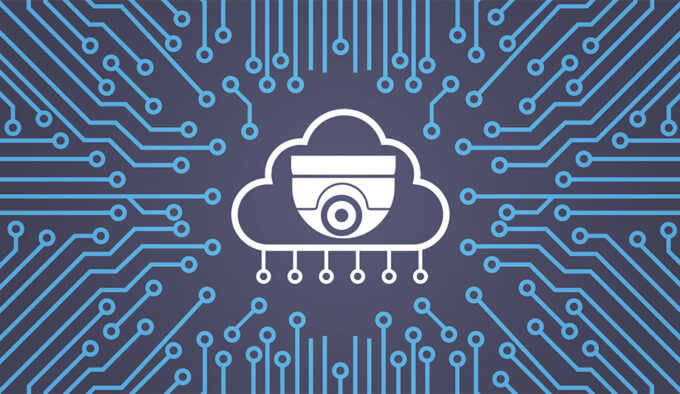It is estimated that the world generates about 413 Petabytes of data every day due to video surveillance. If we do a comparison, Google processes about 20 Petabytes of data every day and this makes video surveillance data about 20 times greater.
All of these numbers show the scale of video surveillance worldwide. From home security to mall security to monitoring large premises like an airport, video surveillance is everywhere. And to monitor and manage recorded surveillance footage, we use what is called a video management system.
In recent years, video management system vendors have evolved and moved from traditional on-premise installations to the cloud. These so-called cloud video management systems, allow organizations to utilize the scalability, security, and flexibility of the cloud for their video surveillance data as well.
In this article, we discuss the various ways in which traditional and cloud-based video management systems differ.
Scalability

There’s no denying the scalability of the cloud and this is a factor where cloud-based video management systems outperform traditional ones. Your organization can easily scale up storage and video streaming infrastructure as requirements grow or shrink. With pay-as-you-go models provided by most cloud vendors, you only need to pay for the amount you consume.
On the other hand, traditional VMS systems involve a lot of investments in storage, servers, and other hardware. You need to invest upfront in resources even if you aren’t consuming them.
And you need to anticipate increases in demand beforehand as you can’t scale up as the need arises.
Compliance and Security

According to the Denodo Global Cloud Survey in 2024, 37% of experts in 150 organizations found security, compliance, and governance to be the key motivating factor when deciding to move to the cloud. Cloud-based systems operate in the world-class security provided by datacenters.
For instance, Azure cloud has security controls built-in its hardware, dynamic AES 256-bit encryption, and a dedicated team of 3500 security experts. Using a system that operates in the Azure cloud, allows organizations to benefit from these security features as well.
However, the security of cloud-based systems is still debatable and certain on-premise systems can be more secure. This is because organizations can have complete control over their data in traditional systems.
Flexibility

Most cloud-based video management systems are device agnostic and work with cameras from a range of hardware manufacturers. This is possible as these systems use cloud services at the backend, which can support protocols from multiple types of cameras.
Cloud-based systems also have the flexibility to be connected to other cloud applications. Some of these offer the flexibility to access video surveillance data through a SaaS-type or YouTube-like UI. This helps when organizations need to share video content with important stakeholders.
Traditional systems only work with limited camera manufacturers. Usually, the VMS and cameras are provided by the same company and if organizations want to add cameras from another vendor, then they aren’t able to do so. These systems also offer a user interface that makes it difficult to share videos with external stakeholders if need be.
In traditional systems, recorded footage is usually stored on on-premise storage, which further makes it difficult to connect to another application if need be. For instance, if you want to categorize videos by connecting your storage to a video indexing service, you can’t do this in a traditional system, but you can easily do it in a cloud-based system.
Access to Innovations

When organizations are storing petabytes of data, certain challenges arise. One of these challenges is for users to be able to find the relevant footage when searching for it. Consider the scenario where you need to look for a certain license plate amongst thousands of footage of cars on the highway. Without access to AI and powerful search features, the process can be lengthy and time-consuming.
Cloud-based systems usually have access to innovative AI services offered by cloud vendors or third-party vendors on the cloud. Today, these can help solve the video search problem as discussed. And with time, as new AI services are developed, these systems are more likely to get access to them.
Archiving and Cold Storage

On the cloud, organizations could always move old and archived footage to cold storage. This storage usually costs less in fee to the cloud vendor as compared to the more rapid access hot storage.
Traditional systems usually store data on the organization’s own hardware and there is no subscription fee of sorts. However, maintenance has its costs and there is no option to move data to a low-cost/maintenance storage.
Data Redundancy and Reliability

If you need to ensure protection from unplanned events such as outages or natural disasters, then you’d probably need to maintain copies of recorded surveillance footage. It is ideal to maintain such copies in separate geographic locations to reduce the risk of data loss. Doing this is much easier in the cloud than in a traditional system.
Leading cloud providers such as Azure and AWS offer multiple options to create backups, which can also be easily stored in multiple data centers in multiple locations. The organization also does not have to go through the tedious and costly process of making copies and maintaining them as the cloud provider deals with this. This is usually at a low cost as cloud providers are able to benefit from economies of scale.
Maintaining copies in a traditional system may be costlier and would require dedicated resources to manage the process. It also is likely to be less reliable if copies aren’t maintained in separate locations. Unless the organization has multiple offices in multiple locations and can maintain such copies.
Conclusion
Organizations can opt for a traditional system or cloud-based system, where each has its pros and cons. The cloud is a modern approach to video surveillance and has benefits in terms of scalability, flexibility, reliability, and innovations.
If you want to see the comparison between the Traditional and Cloud-based vendors read https://blog.vidizmo.com/video-management-system









